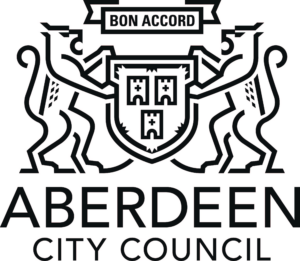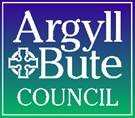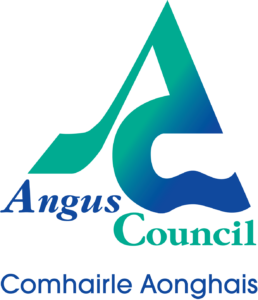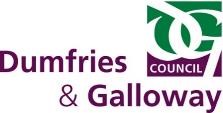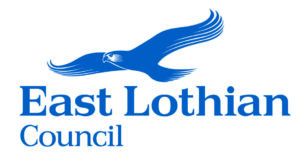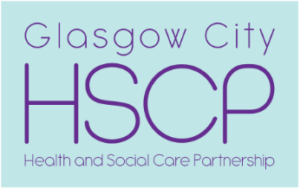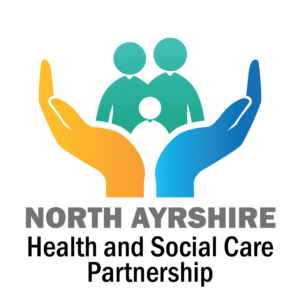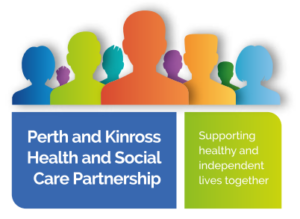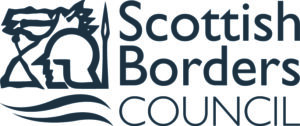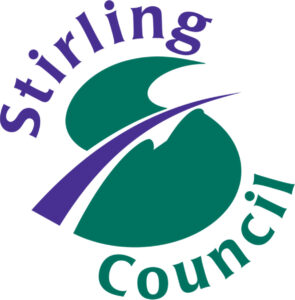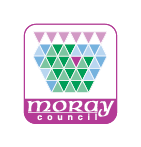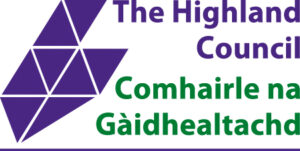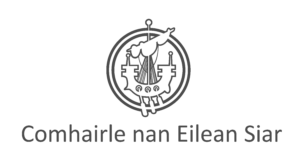HEALTH AND SPORT COMMITTEE
05 June 2020
RE: Forensic Medical Services (Victims of Sexual Offences) (Scotland) Bill
Dear Convener,
Thank you for your letter of 21 May, inviting Social Work Scotland’s response to Committee members’ questions arising from the evidence provided by Children 1st. The evidence provided by Children 1st raised a number of important issues, and we take this opportunity to make explicit our broad support with much of what was said by Chloe Riddell. Fragmentation of children’s experience across multiple policy domains makes it harder to provide the joined-up, multi-agency response (underpinned by shared values and principles) which children need, and which Getting it right for every child seeks to deliver.
We have attempted to answer the Committee’s questions fully below but please request clarification or further information where necessary.
Q1. What are your views on the general principles of the Bill in relation to children and young people?
In our letter to the Committee of 26 February 2020, we welcomed Bill’s provision for 16 & 17-year-olds to self-refer for a forensic medical from a Health Board, on the basis that it represented an improvement on current arrangements. More generally, we support the Scottish Government’s objective of ensuring children have access to the healthcare and holistic support necessary for recovery, irrespective of when child sexual abuse is disclosed (e.g. through the development of the Clinical Pathway for Children and Young People).
However, although we strongly support the principles of the Bill in respect of adult victims, and of Bill’s provision for self-referral for individuals over the age of 16 (ensuring they can access a forensic medical examination, treatment and support without delay), our primary consideration remains children’s welfare and wellbeing.
In this respect, the interface of this Bill’s provisions with child protection processes is of particular importance. In our view, the professional responsibilities (including those of all health clinicians) to safeguard the wellbeing of children cannot be overemphasised. Anything which risks undermining or confusing those responsibilities should be reassessed. The Bill itself, as currently drafted, does not
itself undermine those responsibilities. But as noted in February, we are concerned that in implementation (the translation of this Bill from its intentions to reality) it may unintentionally do so.
Scotland is progressing reform of its children’s policy framework across multiple fronts simultaneously, but not always in coordination with each other. Taking each item on its own Social Work Scotland is often broadly in agreement with the objective. But the failure to properly consider the interdependencies between some agendas, particularly in respect of how they will impact systems, practice and professionals on the ground, does cause us significant concern. Moreover, not all agendas are equal in their structural significance, and in our view, a number of developments cannot properly proceed before others are concluded. We have in mind specifically the renewal of the national child protection guidance, the principles and processes of which must underpin other relevant systems. Ideally, work on
updating the national child protection guidance would be brought to a conclusion before other policies are progressed.
We recommend that it is explicit, either in the Bill or accompanying documentation, that in the provision of forensic medicals to 16 & 17-year-olds child protection remains a paramount consideration and in the exercise of professional judgment about whether significant harm has been experienced (or is at risk of being experienced) communication with social work and police will likely be necessary. The benefit of
such a discussion would be to situate the information about the young person’s experience in context, enabling a better understanding and assessment of risk and need.
Finally, while we understand that the focus of this Bill is tightly defined to sexual abuse, other forms of abuse (such as physical abuse and neglect) also involve for medical examinations/investigations, and the need for effective coordination is essential. Other medical examinations are currently provided for through the National Health Service (Scotland) Act 1978 and a Memorandum of Understanding between
Health Boards and Police Scotland. This Bill does not preclude child-centred coordination between agencies concerned with the safety and wellbeing of the child or young person, but accompanying documentation could be strengthened to emphasise its importance. Those who conduct joint paediatric and forensic examinations following alleged sexual abuse may also find evidence of neglect and
physical abuse and other urgent health needs; that holistic assessment must be available to all children, including those who are 16 & 17 and self-refer under these Bill’s provisions.
Q2. Would you like to see any additional provisions in the Bill and if so what they should cover?
As stated above, our main commentary on the Bill relates to the need for professional judgement to be exercised with a clear consideration of the need to share information with partners (e.g. local authority and the police) in order to determine whether the individual’s experience is indicative of significant harm, or the risk of significant harm. From there, appropriate steps can be taken, if necessary, to
support and protect the individual.
Q3. Do you consider that the provisions in the Bill support the Barnahus approach? Is the Bill Barnahus ready?
Barnahus is recognised as an internationally leading approach to responding to child victims and witnesses of abuse. Among the core components of the approach are:
- Ensuring that the best interests of the child inform practice and decisions;
- That the right of the child to be heard is fulfilled without repeating interviews;
- That the child is interviewed and supported by specialised and competent professionals, in such a way that it does not re-traumatise them and which provides the best evidence obtainable at the time;
- That interviews and examinations are carried out in a multidisciplinary environment in one child-friendly premise, offering support to the child and caregivers without undue delay and in which they can begin the process of sharing experiences safely;
- That the child is not obliged to appear in court, avoiding the need for traumatic cross-examination.
- Working within a co-ordinated plan that provides such therapy and support as may be needed
The Bill does not prevent these aims from being realised, but similarly, it does not obviously facilitate them either. With respect to interviews and examinations being carried out in a multidisciplinary environment, within one child-friendly premise, it could be argued that the Bill, by encouraging greater investment and specialisation within certain NHS locations, makes that aspiration more difficult.
However, it is acknowledged that Barnahus’ development is still at an early stage in Scotland. The first detailed indication of how a Barnahus might operate in Scotland will be provided by the pilot taking place in North Strathclyde, bringing together a partnership of police, health, social work, family support, courts and many others.
The House will have facilities to record evidence and provide children with access to support to recover, as well as to participate in protection and safety planning. The plans include the development of facilities for forensic examination of all forms of abuse, including forensic medicals, meaning the children referred would not need to go to the hospital (unless it was a particularly complicated or urgent case where a hospital
the setting was required).
While Bill’s establishment of a statutory duty on Health Boards to provide forensic medicals is compatible with Barnahus, it does not address fundamental issues around the coordination of services necessary to deliver a holistic assessment. For this Bill to be facilitative of the Barnhaus approach, we would suggest that it needs to attend to how Health Boards contribute to multi-agency, team-around-the-child processes.
Q4. What changes could be made to ensure that there aren’t any unintended consequences in relation to the development of a Barnahus approach?
Delivery of an effective Barnahus approach will depend on a prompt and careful collaborative discussion between many organisations/agencies so that all the component parts of the examination, interviewing and care are coordinated and delivered promptly and properly. The way this will work for a 16 or 17-year-old self-referring for a forensic medical requires careful consideration. An unintended consequence we want to avoid is 16 and 17-year-olds who may face a significant ongoing risk of not having the same opportunity for protective investigation, action and support as other children (including, in time, accesses to a Barnahus).
Q5. Would you prefer children to be included in this Bill or addressed in separate legislation?
Children are considered in this Bill in relation to the need for forensic medical examinations under the Age of Criminal Responsibility (Scotland) Act and in relation to self-referral for young people over the age of 16. We think it is important these sections remain. However, it may be appropriate within this Bill to recognise the necessity for appropriate coordination of services in relation to the investigation of
abuse, and the necessary steps to protect the safety and wellbeing of children affected.
Q6. Do you consider that the provisions in the Bill to restrict self-referral of forensic medical examinations to young people over the age of 16 are appropriate?
We recognise the difficulties that many children and young people have in coming forward to share their experiences. We must do everything possible to ensure a careful, coordinated and trauma-informed response when a child does signal for help. This signalling may occur gradually or suddenly (often in the midst of a crisis). What does or does not emerge is often determined by the sensitivity of the listener
and the degree of emotional and physical safety experienced by the child. The pace, place and skill with which our response is conducted are critical for protection and recovery.
In our view, where there are concerns that a child (including 16 and 17-year-olds) may have been subject to sexual abuse, inter-agency sharing of information within child protection processes should apply. In order to consider the best possible conduct of investigation, action and support, information must be shared early. We support Bill’s option of self-referral to age 16 in the hope that this will widen the
bridge to access to services for some who would not otherwise have come forward. But our primary interest here is in how we respond and protect any child who has been subject to abuse, regardless of their age.
Q7. Should the age at which self-referral services are available to be lowered or raised and why?
We have been generally supportive of Bill’s provision for self-referral at age 16, on the basis that other legal structures (including the age of consent) use this age. But while we do not believe chronological age is an accurate reflection of a child’s capacity and maturity, we would not support lowering the age of self-referral further. This is because we would not want to give a false impression to children under the age of 16 that their self-referral would be kept confidential in any circumstance. The
requirement of forensic medicine for an under 16 would necessarily require the initiation of child protection processes, and any move which made that unclear to children or professionals should be avoided.
Sexual abuse and the associated abuse of power is so often enabled by secrecy. Secrecy is sustained by fear. Some children and young people seeking help do not want the police involved because of threats from perpetrators; threats of violence or other serious consequences to themselves, or those they care for. However, a child’s fear of involving the police or social work is not a reason to deflect from a careful, thorough inter-agency response, which places children’s interests and views at its core. Our collective focus must be on ensuring children of any age feel confident to disclose to someone they trust, and that our response is joined-up and supportive, redressing (rather than exacerbating) their trauma. Our system must also be equipped to spot the signs of significant harm and take appropriate action as
early as possible.
Q8. Is there a possibility that the promotion of self-referral for those aged over 16 may unintentionally act as a barrier to younger victims?
We do not believe the promotion of self-referral will act as a barrier, so long as the routes of referral/raising concern are clear and effective for younger victims. The barriers to younger victims are more likely to relate to the failure of individuals in positions of trust and responsibility to listen and attend to the signals and signs of distress (or beginnings of an account given to whoever is trusted enough to listen).
Q9. Would there be any situations when self-referral for people under the age of 16 would be appropriate?
Please see our response to question 7.
Q10. Are the provisions in the Bill, or should they be, in line with child protection guidance?
National child protection guidance is currently being updated. Our answers to questions above, relating to the sharing of information among professionals, highlight where we think the Bill (or perhaps more pertinently Bill’s accompanying documentation) could be improved.
Q11. If the expectation is that a self-referral by a 16 or 17-year-old may initiate child protection processes, why should the self-referral provision not extend to people under 16 years old?
Please see our response to question 7.
Q12. Are there specific issues that relate to looking after children, over the age of 16, in accessing self-referral services?
The legal status of the child should not affect their access to any medical services, forensic or otherwise. All children may feel isolated or locked into the secrecy of their experience if they are afraid, or do not realise that what is happening is abuse, or if they are being abused by people who hold positions of trust and responsibility in relation to them. What is particularly important in respect to looking after children, as well as many other groups of young people, is to ensure that they are made aware of the services available to them. Special attention should be made to ensuring carers, social workers, health practitioners, advocates, colleges, teachers and pastoral staff have an understanding of these changes.
Q13. Are there specific issues that relate to children with children and young people with disabilities or additional needs that should be considered as part of the Bill?
Careful inter-agency planning of services is needed for any child who may have been abused, but its necessity is particularly evident for those who require support for communication and physical access. These realities underline the need for detailed planning in the implementation of the Bill.
Q14. Do you consider that the provisions in the Bill should be extended to cover alleged child perpetrators of sexual assault and rape?
Children who are involved in harmful behaviours towards others may themselves be victims of neglect and abuse including sexual abuse and when a forensic medical examination is ordered then this process and all other investigative processes should be conducted with consideration of the safety and wellbeing needs of that child. The Age of Criminal Responsibility (Scotland) Act 2019 provides for this.
These processes should be coordinated between agencies but this Bill may not need to cover matters that are covered in the Age of Criminal Responsibility (Scotland) Act 2019 and will be covered by forthcoming guidance on that act.
Q15. Are there specific data protection issues that need to be addressed in relation to children and young people?
We understand that the retention service under the Bill has been developed with consideration of an individual’s need for private and family life, specifically in relation to self-referral, allowing victims time to consider whether to make a report to the police, balanced against other interests, including the protection of health or the protection of the rights of others. All children and young people provided with
forensic medical services need help to understand what information could be shared and how, and for what purposes, with and without permission.
Q16. Should information from forensic medical examinations be linked/ be part of an individual’s healthcare record?
Our understanding is that sexual health records are retained separately from other health records, and cannot be shared without patient permission. They are therefore not shared with the GP (without the patient’s consent) and so do not automatically form part of the individual’s healthcare record.
A summary of findings shared with a GP would assist in developing a holistic understanding of a person’s physical and mental health care needs. However, the retention and sharing of medical information is not an area of specialist expertise for Social Work Scotland. We assume that information governance issues including questions of storage and retention of digital images will form part of the continuing work of the CMO Taskforce in the period leading up to the publication of the Clinical Pathways Guidance for both Adults and for Children and Young People, later in 2020.
If a summary of findings does become part of an individual’s healthcare record, then the data protection issues in relation to access to records for a child under 16 would involve current criteria. Young people with capacity would have the legal right to access their own health records and could allow or prevent access by others, including their parents. They should not be given access to information in their health
records that would cause them serious harm or any information about another person without the other person’s consent. Parents would be allowed to access their child’s medical records if the child or young person consents, or lacks capacity, and it does not go against the child’s best interests. If the records contain information given by the child or young person in confidence the information should not normally be disclosed without their consent. Divorce or separation does not affect parental responsibility and a person with parental responsibilities would presumably be allowed reasonable access to a child’s health records. Access to health records for a young person or an adult who was subject to such an investigation as a young child would require careful handling and support, as with access to other records that include information about abuse.
Yours sincerely,
Alison Gordon, Chief Social Work Officer for North Lanarkshire, Co-Chair Social Work Scotland Children and Families Standing Committee, and Social Work Scotland representative on the National Child Protection Leadership Group
Jacquie Pepper, Chief Social Work Officer for Perth and Kinross, Co-Chair Social Work Scotland Children and Families Standing Committee and Social Work Scotland representative on the Child Protection Guidance Revision National Steering Group

